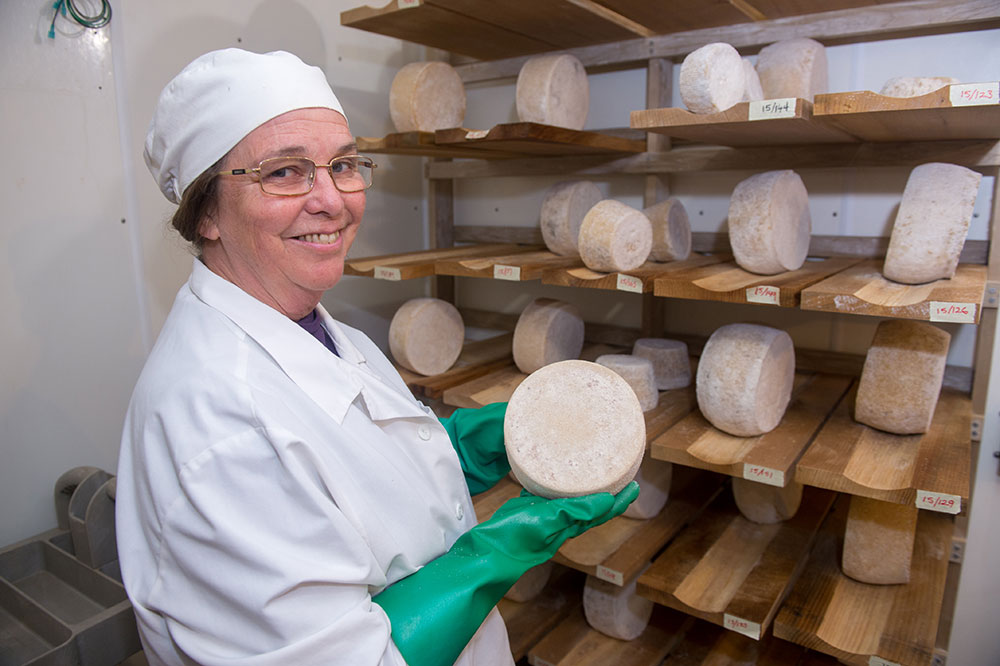A Taste of Authenticity: Floridia Cheese Melbourne and Its Craftsmanship
A Taste of Authenticity: Floridia Cheese Melbourne and Its Craftsmanship
Blog Article
Opening the Keys of Artisanal Cheese Making: A Step-by-Step DIY Overview
In the realm of culinary workmanship, artisanal cheese making stands as a testimony to the fragile equilibrium in between practice and advancement. As we begin on this trip to demystify the art of producing splendid cheeses, we are faced with a tapestry of skills and secrets waiting to be deciphered.
Selecting the Right Milk
When embarking on the journey of artisanal cheese making, the choice of milk plays a vital role in establishing the top quality and qualities of the end product. The sort of milk selected affects the taste, structure, and in general profile of celebrity. Raw milk, directly from the animal, is preferred by many artisanal cheesemakers as a result of its unique mix of enzymes, microorganisms, and flavor compounds. Nonetheless, utilizing raw milk includes regulations and risks, making sterilized milk a safer option for novices.
In addition, the source of the milk, whether from cows, goats, sheep, or buffalo, contributes unique tastes and attributes to the cheese. Each kind of milk brings its very own nuances, allowing for a broad variety of cheese selections to be crafted based on the picked milk.
Culturing and Coagulating
To launch the cheese-making procedure, the crucial steps of culturing and coagulating must be thoroughly carried out to transform milk into curds and whey. Culturing includes presenting helpful microorganisms to the milk, which after that starts the fermentation procedure. These germs convert lactose (milk sugar) into lactic acid, creating the acidic environment necessary for coagulation. The type of society made use of can dramatically influence the taste, structure, and ripening of the final cheese item.

The timing and temperature level control during culturing and coagulation are crucial variables that influence the last result of the cheese. Proper implementation of these steps is essential to make certain the preferred appearance, flavor, and uniformity of the artisanal cheese being created.
Draining Pipes and Pressing Curds
After the milk healthy proteins have coagulated and the curds have been cut to release whey, the following vital action in artisanal cheese making includes draining and pushing the curds to accomplish the wanted structure and uniformity of the final cheese product. Draining pipes is the process of separating the curds from the whey. This can be done by moving the curds into a cheesecloth-lined bowl-shaped sieve or mold and mildew and allowing the whey to drain pipes off normally. The time for draining pipes can differ depending upon the kind of cheese being made and the preferred dampness content.
Once the curds have completely drained pipes, the following action is pushing. Pressing helps get rid of any kind of remaining whey and compacts the curds to form a solid cheese wheel. Pushing can be done making use of specialized cheese presses that use gentle and constant stress over a time period. The period and stress used throughout pressing will influence the final texture of the cheese, from soft and velvety to difficult and company. Correct pushing and draining pipes are essential steps that dramatically influence the top quality and characteristics of the artisanal cheese being produced.
Aging and Flavoring Strategies
Applying thorough aging and flavor methods is critical in enhancing the depth and intricacy of artisanal cheeses, raising their taste accounts to exquisite degrees of improvement and sophistication. Aging plays an essential duty in developing the special flavors and structures that distinguish artisanal cheeses. During the aging process, cheeses are saved in thoroughly controlled atmospheres where elements such as humidity, temperature level, and air flow are manipulated to urge the growth of valuable molds and microorganisms. This controlled setting enables celebrity to mature gradually, developing complicated fragrances and rich flavors.
Seasoning techniques likewise read add significantly to the final preference of artisanal cheeses. Cheesemakers might pick to introduce additional flavors by integrating active ingredients such as herbs, flavors, or also fruits right into celebrity throughout the production process. Additionally, some cheeses are washed or massaged with various liquids, such as brine or alcohol, to improve their tastes and structures.
Covering and Saving Cheeses

Final Thought
Finally, grasping the art of artisanal cheese making entails very carefully picking the best milk, adhering to precise culturing and coagulating procedures, draining pipes and pressing curds properly, and utilizing different aging and flavor techniques. By complying with these actions diligently and with interest to information, you can develop your own delicious and special cheeses in the house. Remember to wrap and keep your cheeses effectively to guarantee ideal taste and appearance development. Pleased cheese making!
Each kind of milk brings its very own subtleties, permitting for a vast array of cheese selections to be crafted based on the picked milk.After the milk healthy proteins have actually coagulated and the curds have actually been cut to release whey, the next important step in artisanal cheese making involves draining and pressing the curds to attain the wanted appearance and uniformity of the final cheese product. Most cheeses must be covered in wax paper or cheese paper to enable them to breathe while protecting them from drying out. For cheeses that need to proceed aging, such as bloomy peels or washed rinds, ensure they are saved in additional resources a trendy setting like a cheese cavern or a refrigerator set to the ideal click here for more temperature level. By paying interest to the wrapping and storage of artisanal cheeses, cheese manufacturers and fanatics can protect the integrity of these delicacies and completely enjoy their complex tastes.
Report this page